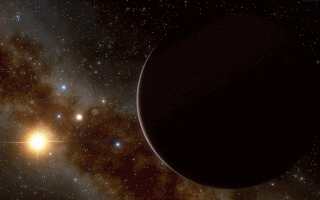
Recently, scientists from the Technical University of Denmark discovered a neutron star rotating around its axis at an impressive speed of 716 revolutions per second, making it one of the fastest rotating objects in the universe today.
This star, which is located in the constellation of Sagittarius, around the center of our galaxy in the Orion Arm, was discovered using a powerful telescope installed at the International Space Station. The news of this discovery was published in the journal 'The Astrophysical Journal'.
Neutron stars are remnants of giant stars after their explosions, known as supernovae. They are among the densest objects in the universe, with masses that can reach the mass of the Sun, despite a diameter that does not exceed 20 kilometers. The diameter of this recently discovered neutron star is only 12 kilometers, and its mass is equal to 1.4 solar masses.
This neutron star is located at a distance of approximately 26 thousand light-years from Earth and mainly consists of neutrons. This gives it unique properties, such as extreme gravitational pull and superbly fast rotation of hundreds of revolutions per second.
According to researchers, this neutron star is part of a binary star system, consisting of two stars rotating around each other. Accompanying it is a white dwarf star, approximately the same size as Earth, which orbits it every 11 minutes - the shortest known orbital period.
Thanks to its high gravity, the neutron star attracts matter from the accompanying white dwarf, leading to thermonuclear explosions, analogous to nuclear explosions, when a sufficient accumulation of matter reaches its surface.
Researchers believe that this discovery "is an important step towards a deeper understanding of the universe and its enigmatic objects," as studying rapidly rotating neutron stars allows checking existing physical theories and developing new models for explaining complex cosmic phenomena.












